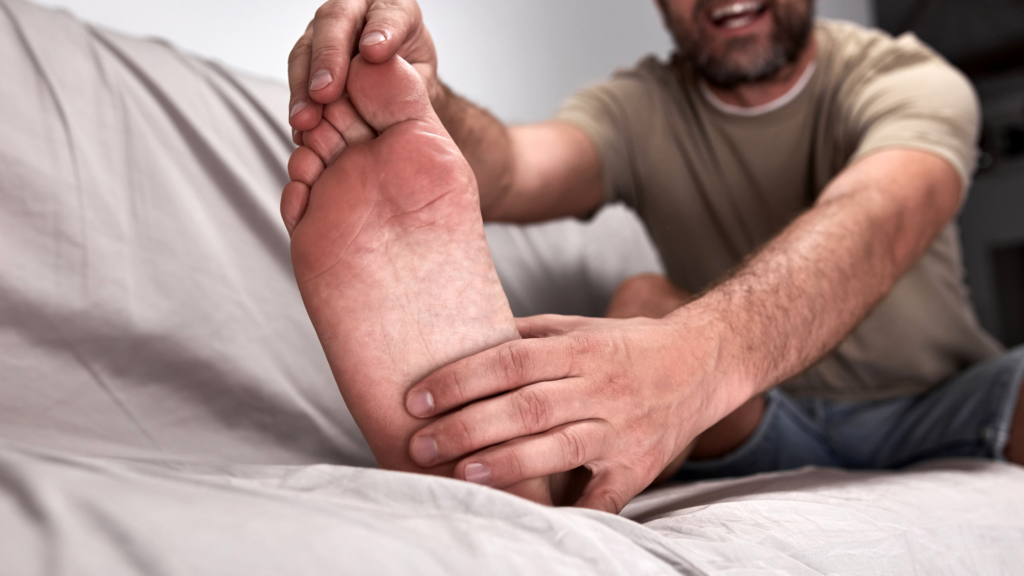Did you know that foot numbness might not always stem from issues in your foot? Many people are surprised to learn that problems in the lower spine, specifically the lumbar spine, can cause numbness in the foot. Conditions like peripheral neuropathy or tarsal tunnel syndrome, which involve pinched nerves in the foot, are often blamed. However, it’s crucial to consider that the real source of the problem might be in the lower back. Understanding this connection can help lead to the correct diagnosis and effective treatment.
The Role of Nerve Roots
Nerves are like highways that carry signals between the brain and the body. They start at the spinal cord and branch out to different areas. Each nerve root in the spine is assigned a number that corresponds to the nearest vertebra. The two nerve roots most responsible for sensation in the foot are called L5 (lumbar nerve root #5) and S1 (sacral nerve root #1). These nerves originate in the lower spine and control not only sensation but also muscle movement in the foot and leg.
When a problem develops at the L5-S1 disc level, it can affect how these nerves function. This might cause numbness, tingling, or even weakness in the foot.
Disc Problems That Cause Nerve Issues
The spine has small, cushion-like discs between each vertebra. These discs act as shock absorbers, helping to protect the spine during movement. Over time, these discs can wear down or develop tiny cracks, called fissures. This wear and tear can lead to several types of disc problems:
- Disc Bulges: The disc starts to lose its shape and bulges outward.
- Disc Protrusions: The disc material pushes further out but remains intact.
- Disc Herniations: The outer layer of the disc cracks, and the inner gel leaks out.
- Disc Extrusions: The gel leaks out completely and can press on nearby structures.
These disc issues often occur at the L5-S1 level, the most common area for spinal problems, because it is the very bottom level.
How Nerves Are Affected
When the L5 or S1 level develops one of these abnormalities, it can irritate the nearby nerve roots in two ways:
- Physical Compression: A bulging or herniated disc can press directly on the nerve root. This pressure can disrupt the nerve’s ability to send signals, leading to numbness in the areas it controls, like the foot. This condition has been named radiculopathy and often nicknamed “pinched nerve”.
- Chemical Irritation (Radiculitis): Sometimes, molecules from the inner gel of the disc leak out through cracks in the disc. These molecules can inflame the nerve root, even without direct pressure. This inflammation can also cause numbness, tingling, or pain. To distinguish this process from a “pinched nerve”, the name radiculitis was created.
Importance of Diagnosis
Recognizing that foot numbness could be caused by a low back problem is essential because it affects the treatment plan. If other causes, like peripheral neuropathy or tarsal tunnel syndrome, are ruled out, doctors should evaluate the spine. Advanced imaging tests like MRIs can help identify disc issues or nerve root compression.
Treatment Options
The good news is that many cases of foot numbness caused by low back issues can be treated without surgery. Nonsurgical options include:
- Physical Therapy: Exercises to strengthen the back and improve flexibility.
- Medications: Anti-inflammatory drugs to reduce nerve irritation.
- Epidural Injections: Steroid injections near the affected nerve root to reduce inflammation.
- Spinal Decompression Therapy: Techniques to relieve pressure on the discs.
- Discseel®: New non-surgical technology which seals the disc cracks that cause symptoms.
Conclusion
Foot numbness can be a frustrating symptom, but understanding its connection to the spine can help pinpoint the cause. If you experience persistent numbness and other conditions are ruled out, it’s worth exploring whether your lumbar spine is the source. With the right diagnosis and treatment, most people can find relief and restore normal sensation to their foot.
Contact Regenerative Spine and Joint Center using the form below to explore your options for treatment.

